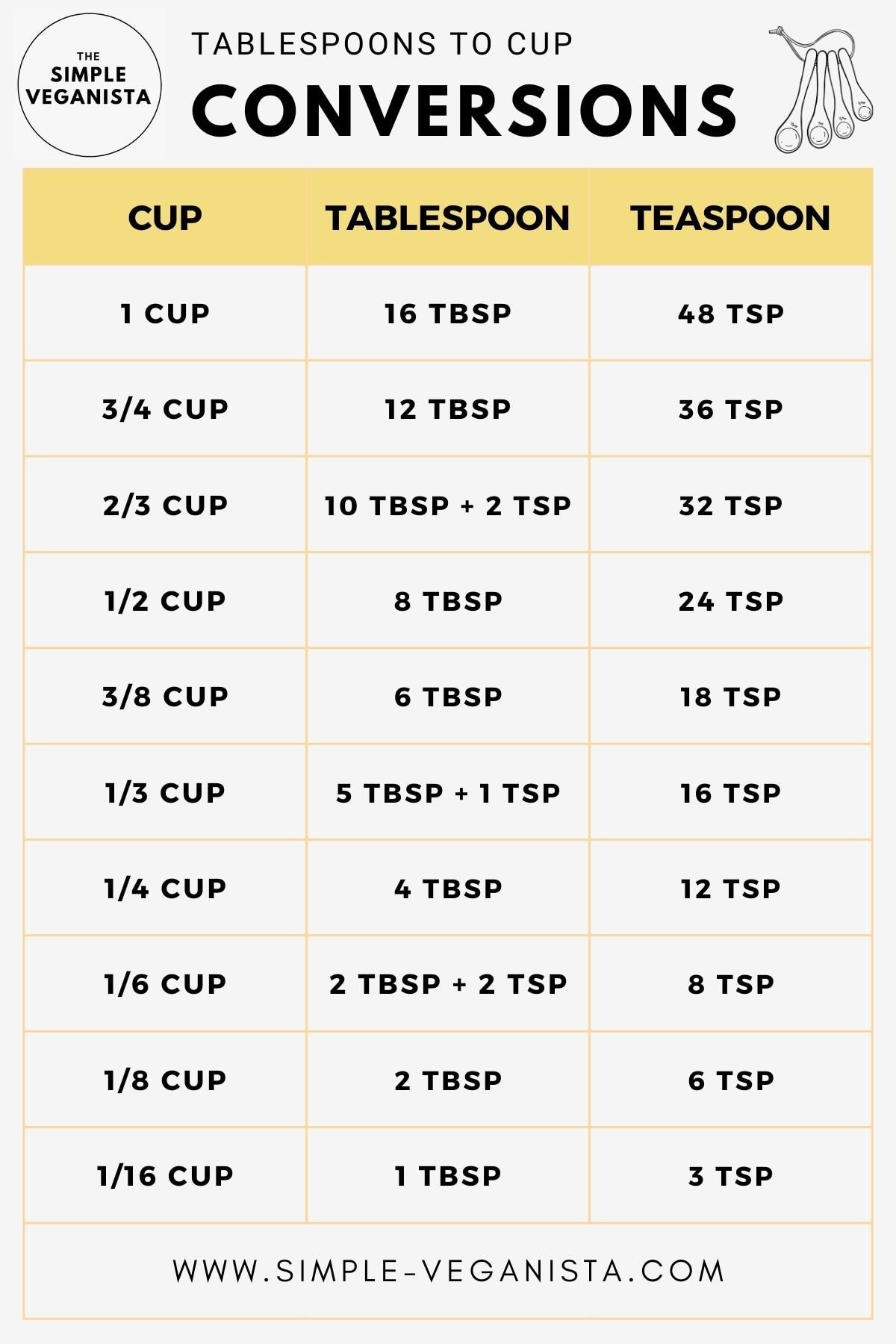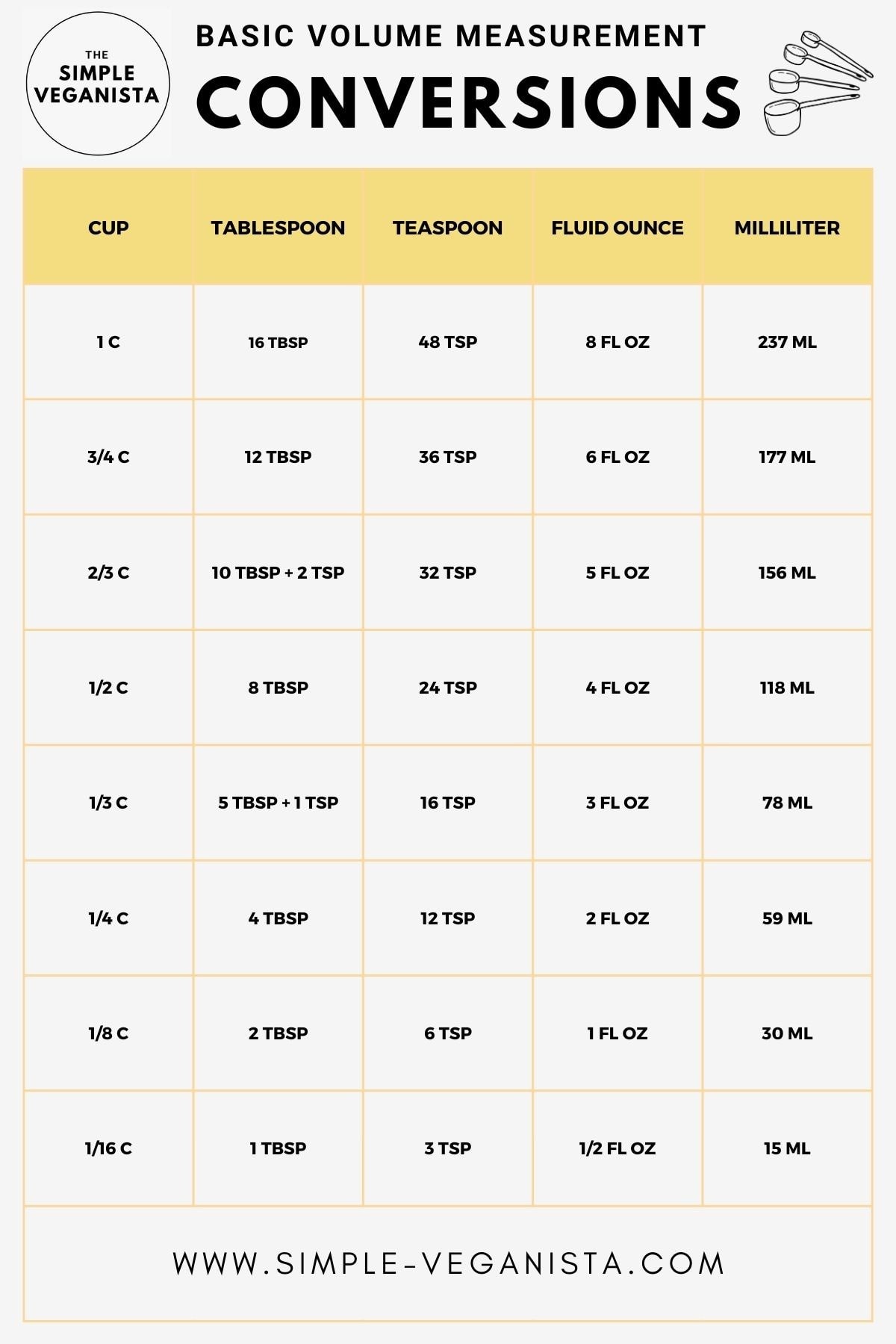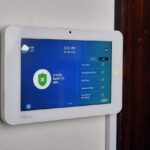Are you confused about kitchen conversions, specifically “how many tablespoons in a cup”? At HOW.EDU.VN, we provide clarity and expertise to streamline your cooking and baking endeavors. This guide not only answers your query but also equips you with advanced insights and precise conversion methods for culinary success, ensuring accurate measurements every time. Explore the nuances of liquid measurement and baking conversions to enhance your skills.
1. What is a Tablespoon and How is it Used in Cooking?
A tablespoon (Tbsp, tbsp, Tb, or T) is a standard unit of volume in cooking, essential for accurately measuring spices, oils, and other ingredients. Typically, one tablespoon equals 1/2 fluid ounce, 3 teaspoons, or 15 milliliters. Precision in tablespoon measurements ensures consistency in flavor and texture in your dishes.
- 1 tbsp = 1/16 cup
- 1 tbsp = 3 tsp
- 1 tbsp = 15 ml
- 1 tbsp = 1/2 fl oz
2. What is a Cup in Culinary Terms?
A cup (C or c) is another common unit of volume, primarily used for larger quantities of ingredients like flour and liquids. One cup is equivalent to 16 tablespoons, 8 fluid ounces, or approximately 237 milliliters. Understanding this measure is crucial for maintaining the right proportions in recipes.
- 1 cup = 16 tbsp
- 1 cup = 48 tsp
- 1 cup = 237 ml
- 1 cup = 8 fl oz
3. What Are the Differences Between US Standard, US Legal, and Metric Cups?
The US Standard, US Legal, and Metric Cups vary slightly in volume, which can affect recipe outcomes, especially when scaling recipes.
- US Standard Cup: Predominantly used in the United States for cooking and baking, it equals 8 US fluid ounces or approximately 236.59 milliliters.
- US Legal Cup: Primarily for nutritional labeling in the United States, standardized at precisely 240 milliliters to ensure uniformity in nutritional data.
- Metric Cup: Common in countries using the metric system, this cup measures 250 milliliters, facilitating easier metric conversions in recipes.
Knowing which cup type your recipe uses is essential for accuracy. The minimal variations can accumulate and change results, especially when you’re scaling recipes.
4. Does It Matter if Tablespoons and Cups are Wet or Dry?
In measurement terms, there is no inherent difference between “wet” and “dry” tablespoons or cups. Whether measuring liquids or dry ingredients, a tablespoon remains a tablespoon, and a cup remains a cup. The critical factor is using proper techniques for measuring each type of ingredient to ensure accuracy. Precise liquid and dry measurements are crucial for recipe success.
5. How Many Tablespoons are Exactly in One Cup?
There are 16 tablespoons in one standard cup. This conversion is essential for anyone who cooks or bakes, simplifying ingredient measurement and recipe adjustments. It can be expressed as 16 tablespoons = 1 cup, 16 T = 1 c, or 1 c = 16 Tbsp, making it versatile for all recipes.
Knowing that one cup equals 16 tablespoons is helpful whether you’re doubling a recipe or only need a fraction of the measurement. It’s a fundamental skill that enhances your accuracy and efficiency in the kitchen.
6. What are Common Tablespoon-to-Cup Conversions to Know?
Here are common conversions between tablespoons and cups that simplify cooking and baking:
- 1 tablespoon (tbsp) = 1/16 cup (c)
- 2 tablespoons (tbsp) = 1/8 cup (c)
- 4 tablespoons (tbsp) = 1/4 cup (c)
- 5 tablespoons (tbsp) + 1 teaspoon (tsp) = 1/3 cup (c)
- 6 tablespoons (tbsp) = 3/8 cup (c)
- 8 tablespoons (tbsp) = 1/2 cup (c)
- 10 tablespoons (tbsp) + 2 teaspoons (tsp) = 2/3 cup (c)
- 12 tablespoons (tbsp) = 3/4 cup (c)
- 16 tablespoons (tbsp) = 1 cup (c)
7. Quick Tablespoon to Cup Conversion Chart
| Tablespoons | Cups |
|---|---|
| 1 tbsp | 1/16 c |
| 2 tbsp | 1/8 c |
| 3 tbsp | 3/16 c |
| 4 tbsp | 1/4 c |
| 5 tbsp | 5/16 c |
| 6 tbsp | 3/8 c |
| 7 tbsp | 7/16 c |
| 8 tbsp | 1/2 c |
| 9 tbsp | 9/16 c |
| 10 tbsp | 5/8 c |
| 11 tbsp | 11/16 c |
| 12 tbsp | 3/4 c |
| 13 tbsp | 13/16 c |
| 14 tbsp | 7/8 c |
| 15 tbsp | 15/16 c |
| 16 tbsp | 1 c |



Alt text: A comprehensive tablespoon to cups conversion chart showing equivalents for easy kitchen reference.
8. What is the Mathematical Formula for Tablespoons in a Cup?
The basic formula to remember is:
1 cup = 16 tablespoons
9. How Do You Convert Tablespoons to Cups?
To convert tablespoons to cups, divide the number of tablespoons by 16.
Cups = Tablespoons ÷ 16
If your recipe calls for 32 tablespoons of liquid, you calculate:
Cups = 32 tablespoons ÷ 16 = 2 cups.
10. How Do You Convert Cups to Tablespoons?
To convert cups to tablespoons, multiply the number of cups by 16.
Tablespoons = Cups × 16
If you need to convert 2 cups into tablespoons, the calculation would be:
Tablespoons = 2 cups × 16 = 32 tablespoons.
11. How to Convert Other Measurement Units?
Mastering conversions between various units enhances your adaptability in the kitchen.
- Teaspoons to Tablespoons: 1 tablespoon = 3 teaspoons.
- Tablespoons to Fluid Ounces: 1 fluid ounce = 2 tablespoons.
- Cups to Pints, Quarts, and Gallons: 2 cups = 1 pint, 4 cups = 1 quart, and 16 cups = 1 gallon.
- Fluid Ounces to Cups: 8 fluid ounces = 1 cup.
12. Understanding Basic Measurement Units
Familiarity with fundamental units of measurement is key to culinary precision:
- Teaspoons (tsp) are used for small quantities of spices or extracts.
- Tablespoons (tbsp) are suitable for measuring oils and sugars.
- Cups (c) measure larger volumes of flour and liquids.
- Fluid ounces (fl oz) are standard for liquid volumes.
- Milliliters (ml) and Liters (L) are metric units common internationally.
13. Tips for Accurate Measuring
Achieving accuracy in measurements involves more than just knowing the conversions; it requires the right techniques and tools.
13.1 Selecting the Right Measuring Tools
- Measuring Spoons: Essential for small quantities, ensuring consistency in spices and extracts.
- Measuring Cups: Perfect for larger amounts of dry ingredients, providing accurate fills.
- Liquid Measuring Cups: Designed with spouts for easy pouring of liquids without spillage.
- Digital Kitchen Scale: Offers the highest precision, measuring ingredients by weight for critical recipes.
13.2 How to Measure Dry Ingredients
To accurately measure dry ingredients such as flour, spoon the ingredient into the measuring cup until it is slightly overfilled. Then, use a flat utensil like a spatula to level off the top, ensuring you have the precise amount needed. This technique prevents packing, which can lead to using too much of the ingredient.
13.3 How to Adjust Measurements for Altitude
High altitude cooking often requires adjustments due to lower air pressure, affecting how ingredients react. Lower air pressure can cause baked goods to rise too quickly and then collapse. It may be necessary to:
- Reduce the amount of leavening agents (baking powder or baking soda).
- Increase the amount of liquid to prevent the product from drying out.
- Increase oven temperature to set the structure of the baked good faster.
Refer to specific high-altitude baking guides for precise modifications tailored to different elevations and recipes.
Alt text: Measuring dry ingredients using measuring cups and spoons with precision.
14. Common Measurement Mistakes and How to Avoid Them
Avoiding common measuring errors is critical for achieving consistent culinary results.
- Using the wrong tools: Always use the correct measuring spoons or cups specified for dry or liquid ingredients.
- Over-packing or under-packing: Ensure dry ingredients are spooned loosely into the measuring cup and leveled without pressing down.
- Not leveling off: Use a flat utensil to remove any excess ingredient above the rim of the measuring cup for accurate amounts.
- Incorrect liquid measurement: Measure liquids at eye level to avoid parallax errors, ensuring the meniscus aligns with the correct marking.
15. Tablespoon to Cup Conversion Chart (US + Metric)
| Measurement | US Customary | Metric Equivalent |
|---|---|---|
| 1 Tablespoon | 1/16 Cup | Approximately 15 Milliliters |
| 2 Tablespoons | 1/8 Cup | Approximately 30 Milliliters |
| 4 Tablespoons | 1/4 Cup | Approximately 60 Milliliters |
| 8 Tablespoons | 1/2 Cup | Approximately 120 Milliliters |
| 12 Tablespoons | 3/4 Cup | Approximately 180 Milliliters |
| 16 Tablespoons | 1 Cup | Approximately 240 Milliliters |
16. Converting Recipes from Different Countries
Converting international recipes requires understanding that measurement systems vary significantly. Using online converters and referring to conversion charts can help translate measurements accurately. Many modern recipe sites also offer options to switch between metric and imperial units, simplifying the process.
17. FAQs
17.1. How many tablespoons are in a cup of butter?
There are 16 tablespoons in a cup of butter. Butter is commonly packaged in sticks marked with tablespoon measurements, which simplifies measuring.
17.2. How many tablespoons are in a cup of sugar?
A cup of sugar contains 16 tablespoons, whether it is granulated, powdered, or brown sugar.
17.3. How many tablespoons are in a cup of flour?
There are 16 tablespoons in a cup of flour, regardless of the type of flour.
17.4. How many tablespoons in a cup of coffee?
The term “cup” when referring to coffee typically means a serving size rather than a standard measuring cup. A standard coffee cup usually holds between 6 to 12 fluid ounces, which is 12 to 24 tablespoons.
17.5. How many tbsp in a cup?
There are 16 tablespoons in a cup, which is a standard measurement for volume.
17.6. How many tablespoons are in a cup and a half?
In a cup and a half, there are 24 tablespoons (1.5 cups x 16 tablespoons/cup).
17.7. How many tablespoons in a cup of brown sugar?
There are 16 tablespoons in a cup of brown sugar. Ensure that you pack the brown sugar into the measuring cup to achieve an accurate measurement.
17.8. How many tablespoons are in a half cup?
There are 8 tablespoons in a half cup.
17.9. How many tablespoons are in a quarter cup?
There are 4 tablespoons in a quarter cup.
Alt text: US and metric conversions for common kitchen ingredients.
18. Food For Thought
Mastering conversions between tablespoons and cups significantly enhances your culinary skills. Accurate measurements ensure your dishes are delicious and consistent. By understanding these units and using the correct tools, you can confidently experiment and refine your cooking and baking techniques.
19. Need Expert Culinary Advice?
Navigating the nuances of culinary measurements can be challenging. At HOW.EDU.VN, we connect you with leading experts who can provide personalized guidance for all your culinary needs. Whether you’re struggling with recipe scaling, ingredient substitutions, or advanced cooking techniques, our network of doctoral-level experts is ready to assist.
19.1. How HOW.EDU.VN Can Help
- Direct Access to Experts: Connect with experienced culinary professionals for tailored advice.
- Personalized Solutions: Receive customized strategies to overcome your specific culinary challenges.
- Time and Cost Savings: Avoid costly mistakes by getting it right the first time with expert guidance.
- Confidential and Reliable Advice: Benefit from discreet and trustworthy consultations.
19.2. Ready to Transform Your Culinary Skills?
Don’t let culinary complexities hold you back. Contact HOW.EDU.VN today for expert support and unlock your full potential in the kitchen. Our team is committed to providing practical, actionable advice that ensures your culinary creations are always a success.
Contact Information:
- Address: 456 Expertise Plaza, Consult City, CA 90210, United States
- WhatsApp: +1 (310) 555-1212
- Website: HOW.EDU.VN
Let how.edu.vn be your partner in achieving culinary excellence, providing the knowledge and support you need to master every recipe.
